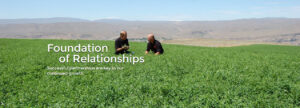 The horse is one of the most efficient runners in the animal kingdom. A horse’s heart and lung capacity are about two times larger than those of other animals with similar mature body weights. The Thoroughbred racehorse has the largest and most efficient heart due to genetics and also to conditioning by training. While the average Thoroughbred heart weighs between 8 and 10 pounds, some elite racehorses have hearts that weigh twice as much. Secretariat, perhaps the greatest racehorse of all time, had a heart that was estimated to weigh at least 22 pounds1! A larger heart pumps more blood and delivers more oxygen to muscles, resulting in greater stamina and capacity for exercise. Furthermore, horses have huge spleens, which are organs that store red blood cells. Red blood cells are responsible for transporting oxygen to muscles and other organs. When a horse starts running, abdominal muscles contract and squeeze the spleen. The resultant spike of red blood cells and oxygen in the circulation allows the horse to run at top speeds from a virtual standstill.
The horse is one of the most efficient runners in the animal kingdom. A horse’s heart and lung capacity are about two times larger than those of other animals with similar mature body weights. The Thoroughbred racehorse has the largest and most efficient heart due to genetics and also to conditioning by training. While the average Thoroughbred heart weighs between 8 and 10 pounds, some elite racehorses have hearts that weigh twice as much. Secretariat, perhaps the greatest racehorse of all time, had a heart that was estimated to weigh at least 22 pounds1! A larger heart pumps more blood and delivers more oxygen to muscles, resulting in greater stamina and capacity for exercise. Furthermore, horses have huge spleens, which are organs that store red blood cells. Red blood cells are responsible for transporting oxygen to muscles and other organs. When a horse starts running, abdominal muscles contract and squeeze the spleen. The resultant spike of red blood cells and oxygen in the circulation allows the horse to run at top speeds from a virtual standstill.
The horse’s respiratory system moves more than 10 gallons of air in and out of the lungs every second during intense exercise2. Twenty-five percent of the oxygen in inhaled air is absorbed into the bloodstream, transported to muscle cells, and used to fuel aerobic (oxygen-based) metabolism. Oxygen is used to break down carbohydrates and fats stored in muscle and in the liver into energy. Feeding a racehorse must therefore optimize fuel storage so a horse can run and not experience muscle fatigue.
Energy is the most important nutrient to consider when feeding a racehorse3. Of course, other nutrients are essential and diets should be balanced to meet those requirements. But, let’s face it – without adequate fuel, a horse cannot run efficiently! Previous blog articles have described the importance of forage to maintain proper gut function in horses. In addition to maintaining gut function and health, the fiber in forage is also a significant energy source for horses. When fiber is fermented by microorganisms in the hindgut, end products of fermentation are major energy sources2.
For that reason and to meet maintenance energy requirements, high quality forage like timothy hay should be at the root of a racehorse’s diet. Timothy hay is one of the most popular feeds for horses across the globe and is widely used in the race horse industry. This type of hay is a late-maturing, high fiber bunchgrass with relatively low protein content. Smaller quantities of alfalfa hay may also be fed3. Alfalfa hay is high in energy and a superior source of essential vitamins and minerals.
Unfortunately, a forage-only diet will not meet the caloric requirements of intense energy output during a race. Muscle stores of glycogen, a major fuel source, must be replenished after training or racing. Consequently, racehorses are fed large quantities of energy-rich grains such as corn, oats, and barley. The soluble carbohydrate and starch content of grains increase levels of blood glucose and insulin, two factors that are important in the replenishment of muscle glycogen stores. Racehorses should be fed small, frequent meals of grain, rather than one or two large portions a day to reduce the risk of hindgut acidosis, a condition that results when starch passes undigested into the hindgut. Microorganisms in the hindgut ferment the excess starch into lactic acid, which lowers the pH (becomes more acidic) in the hindgut, resulting in potential adverse health effects. Fats, vegetable oils in particular, can also be added to a racehorse’s diet to increase the energy density. Fats are highly digestible and are safe energy sources. However, oils should be gradually introduced into the diet to avoid loose, greasy manure.
While extra protein can be broken down into energy, excessive protein intake by racehorses is discouraged. Increased protein intake will substantially increase water requirements and levels of urea in the blood, which will result in higher excretion of urea in the gut that may lead to intestinal enterotoxemia. Additionally, heightened concentrations of ammonia in the blood may negatively affect carbohydrate metabolism.
Producing a successful racehorse requires an extensive knowledge of Thoroughbred bloodlines and genetics and also necessitates a delicate balance of conditioning and nutrition.
To recieve this blog from Anderson Hay in your email, subscribe above to the right.
References
1 http://en.wikipedia.org/wiki/Secretariat_(horse)
2 Marlin, D. 2007. The airways and the lungs. The forgotten organs. The Horse. November 2007. pp. 41-46.
3 Think energy when feeding the racehorse. Equinews. Kentucky Equine Research. http://www.equinews.com/article/think-energy-when-feeding-the-racehorse


